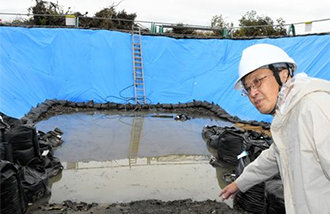Ultraviolet Light Exposure Ages Skin Faster
Ultraviolet Light Exposure Ages Skin Faster
Posted May. 02, 2004 21:50,

Skin doesnt like ultraviolet light.
Bright light gives a mans mind vitality. In addition, sunlight forms or bones or keeps them strong by being involved in making vitamin D. But skin doesnt like sunlight because it makes the skin get older fast. In other words, it is the main culprit of discolorations on the face, freckles, dark spots, wrinkles as well as acute skin responses. It also increases cutaneous cancer. According to the National Cancer Center, the number of cutaneous cancer cases increased more than two times to 1,322 cases in 2002 versus 594 in 1992.
--Why ultraviolet rays?
Ultraviolet rays are literally ultraviolet, that is, a ray outside violet. Ultraviolet rays are divided into ultraviolet ray A, ultraviolet ray B, ultraviolet ray C etc according to the order of wavelength. Ultraviolet rays are a main cause of skin burning. They also deteriorate immunity functions and cause cancer on the skin. Ultraviolet ray A consists of 95 percent ultraviolet rays and makes skin dark. Ultraviolet ray C having strong sterilizing power, but does not come down to the land as it is almost entirely absorbed in the ozone layer.
Ultraviolet rays reflect well, even though its permeability is weak compared to visible rays.
Accordingly, most sunrays coming through windows are infrared rays. Some ultraviolet rays, which come through windows, are mostly A type. So warmth can be felt in a glass window, but it is rare to be burned. But ultraviolet ray A can bring about discoloration or freckles. This is why drivers are more likely to have a discoloration or freckles on their left faces.
--Ultraviolet light causes disease.
When skin is exposed to ultraviolet light, there is a burning or pigmentation. In the long term, there could be a discoloration, freckles and wrinkles. Burning has symptoms of aching, reddening skin or fever in the evening after being exposed to too much sunlight. In serious cases, blisters form and more than a week is needed for them to heal. Pigmentation occurs after two or three days.
When skin glows and feels hot, it should be cooled as soon as possible. Cover with gauze dipped in cold water or cold milk on the burned spot for 10 to 20 minutes. Aspirin, which reduces inflammation, also helps. Applying a steroid after consulting with a doctor can help as well. Fever and pain can be relieved by using natural packs such as potatoes and cucumbers.
A discoloration, pigmentation deep inside skin, needs a long-term treatment. Whitening medicine, which suppresses pigmentation and, vitamin A derivatives, which leads revitalization, are effective.
In recent days, complex medicines including whitening ingredients, vitamin A, and steroids have been revealed by pharmaceutical companies such as Galderma Korea. Light skin scaling and vitamin C treatments using laser and electrophoresis are used as well.
Freckles are easy to remove as they consist of pigmented skin unlike a discoloration. For its removal, lasers is mostly used, and whitening medicine should be taken for a month to prevent relapse after an operation in case of those who have sensitive skin. Dark circles are also possible to be completely cured by laser or freezing.
(Assisted from Professor Lee Ju-heung of dermatology in Samsung Seoul hospital and Professor Kim Su-chan of dermatology in Shinchon Severance hospital)
Jin-Han Lee likeday@donga.com







